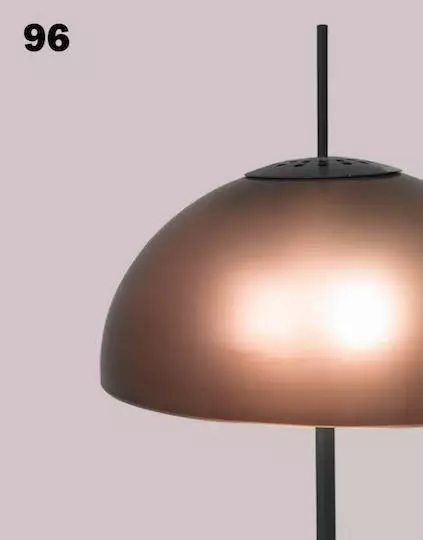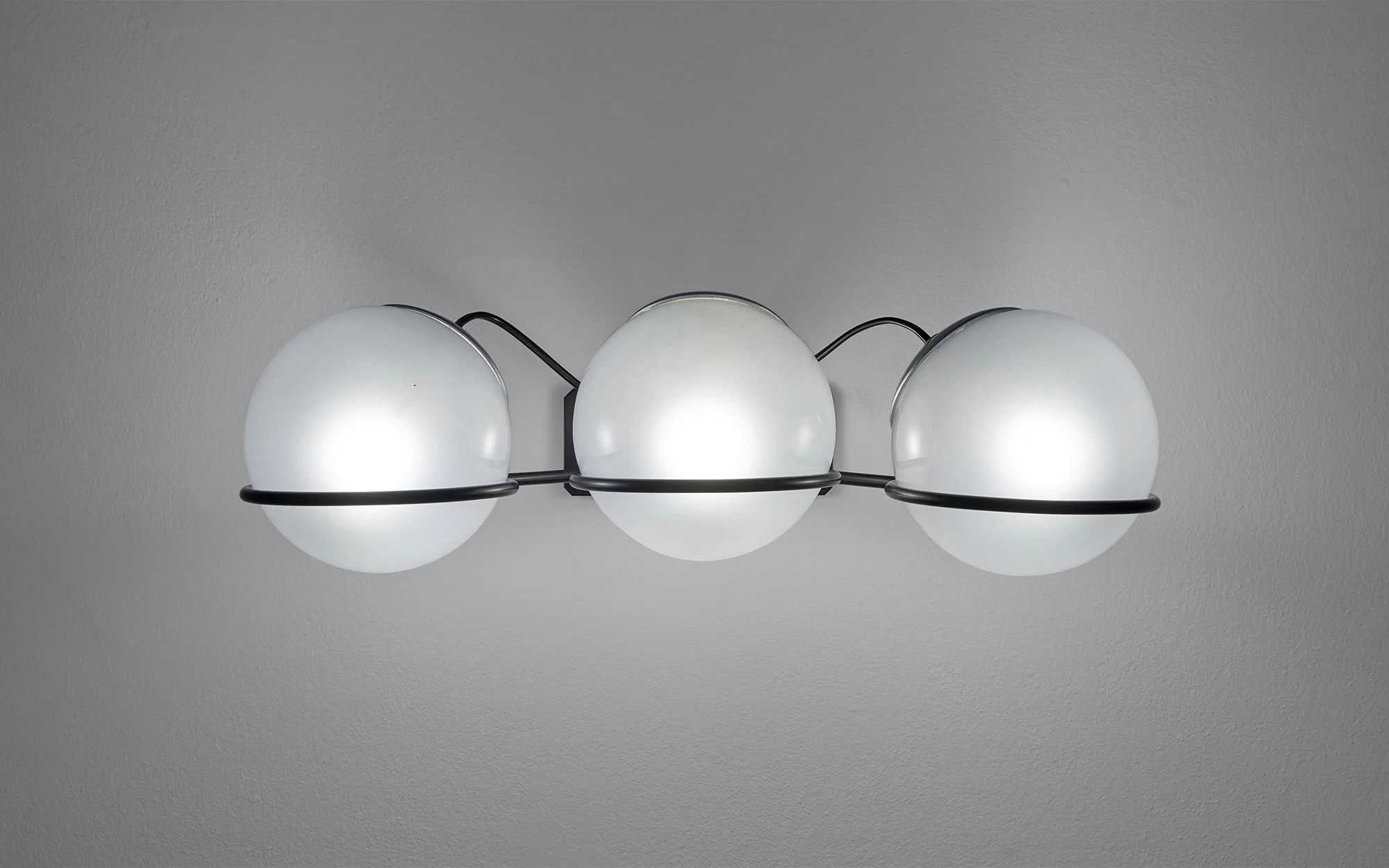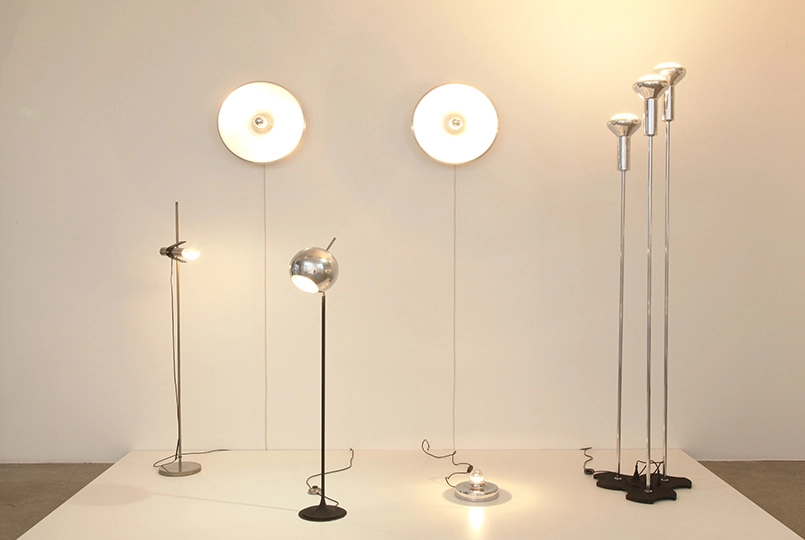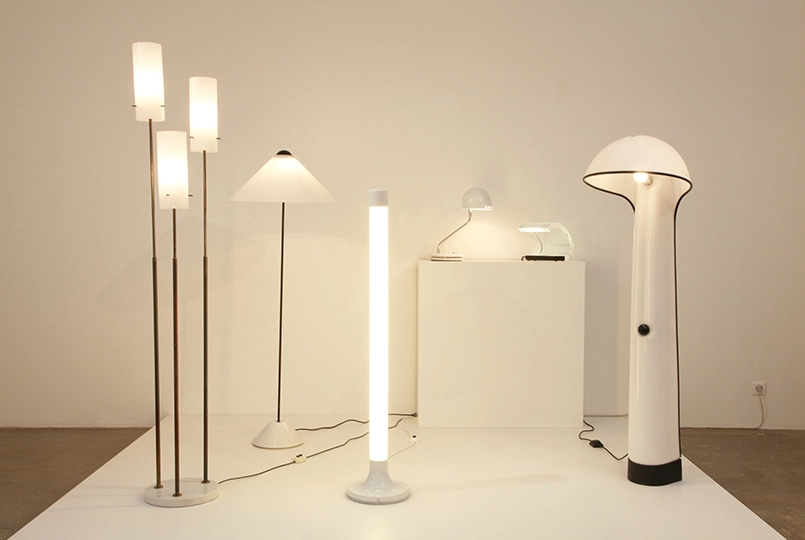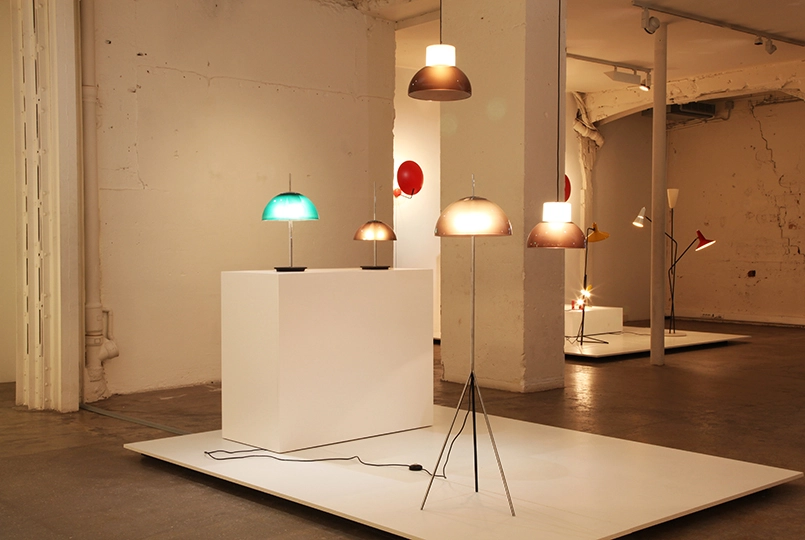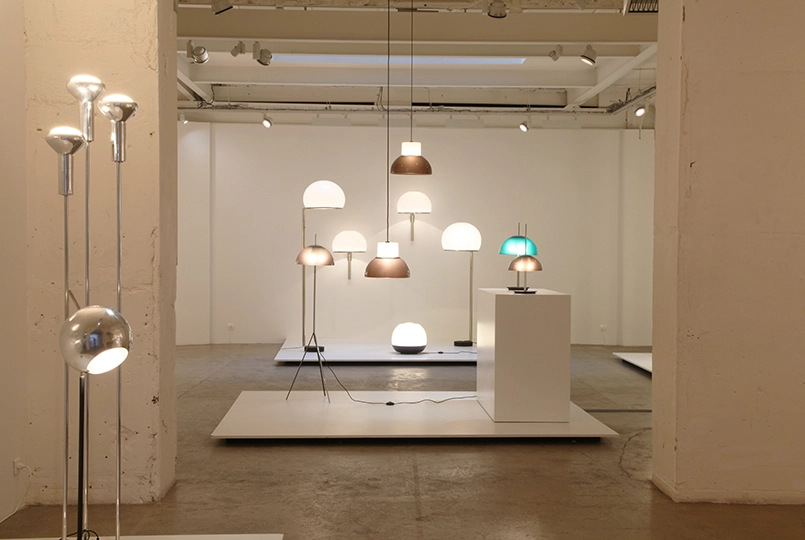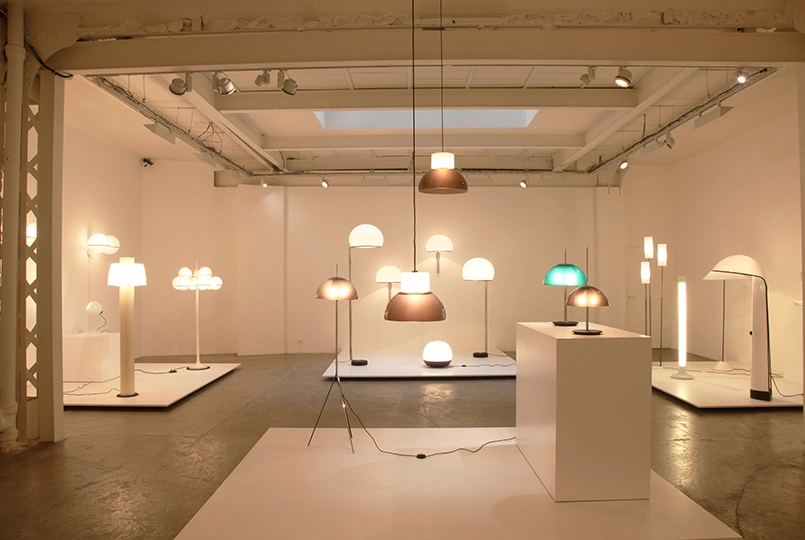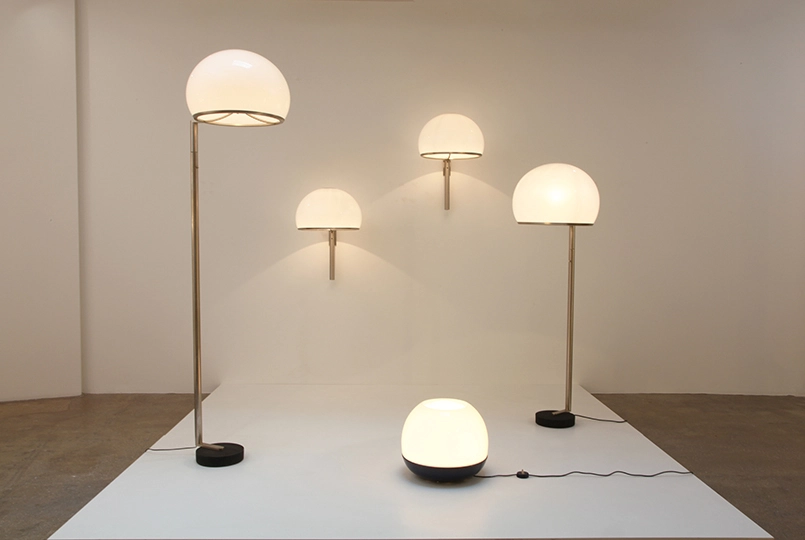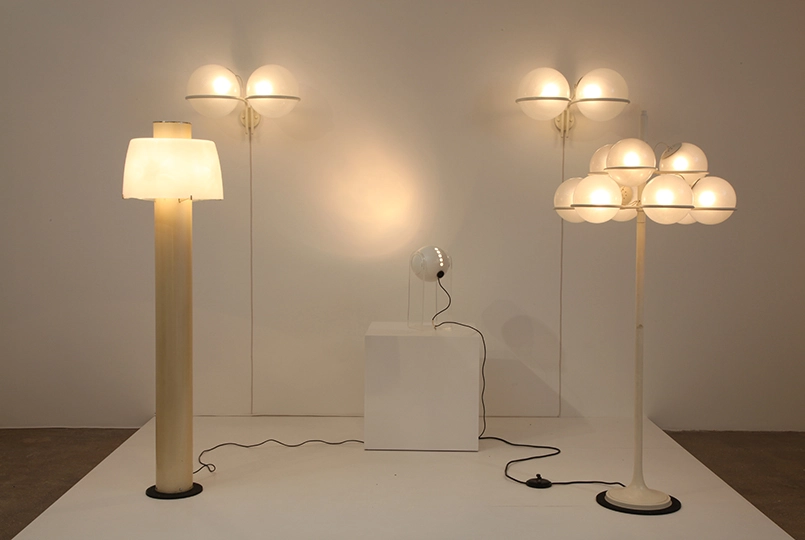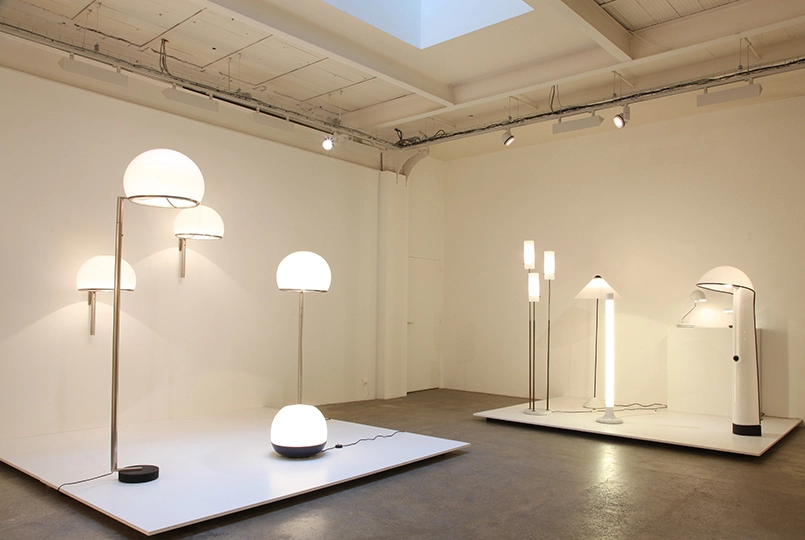After the war, Italian culture was still largely affected by the austerity of the thirties and se-veral decades of dictatorial regime. Many artists and architects moved to the united states, where culture was being rapidly industrialised. They discovered products with rich forms that were opulent, aerodynamic and highlighted by frequent advertising...
After the war, Italian culture was still largely affected by the austerity of the thirties and se-veral decades of dictatorial regime. Many artists and architects moved to the united states, where culture was being rapidly industrialised. They discovered products with rich forms that were opulent, aerodynamic and highlighted by frequent advertising. It was in this entirely new spirit that the Italians entered the fifties.
Industrial production of design and especially lighting developed largely due to numerous archi-tects / designers : Giuseppe Ostuni, Tito Agnoli, Joe Colombo, without forgetting the greatest : Gino Sarfatti. Italian homes were brightened, forms became rounder, and colour increasingly found its way into designs. They began to consider different possibilities for lighting : indirect, by projection … Lights began to have more arms, branches, balljoints, allowing them to move in all directions. The materials used also began to evolve. The 1950s welcomed the arrival of plexiglass and aluminium: both were less fragile, more malleable and easier to produce industrially.
The publications (Domus, Casabella, Stile Industria …) and exhibitions such as the Triennale of Milan helped establish the influence of Italian design on an international scale. Similarly, designers such as Gino Sarfatti, Angelo Lelli and Vittoriano Vigano, gained
status as the reference point for their contemporaries .
Galerie kreo pays homage to a decade that was unique in it’s abundant creation that was both diverse and modern. The fifties highlighted pieces that were both rare and intelligent which, like all masterpieces, are timeless.
